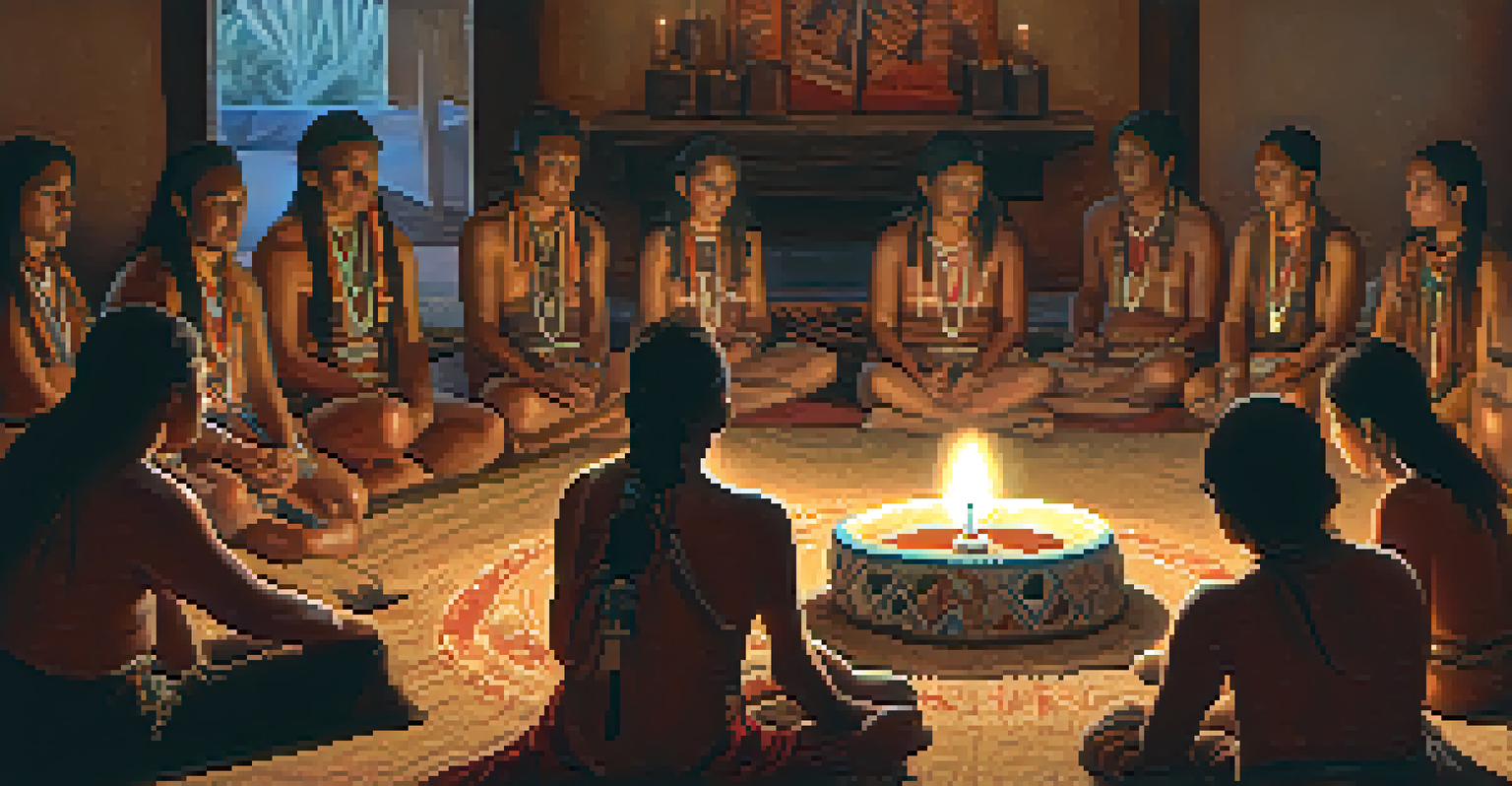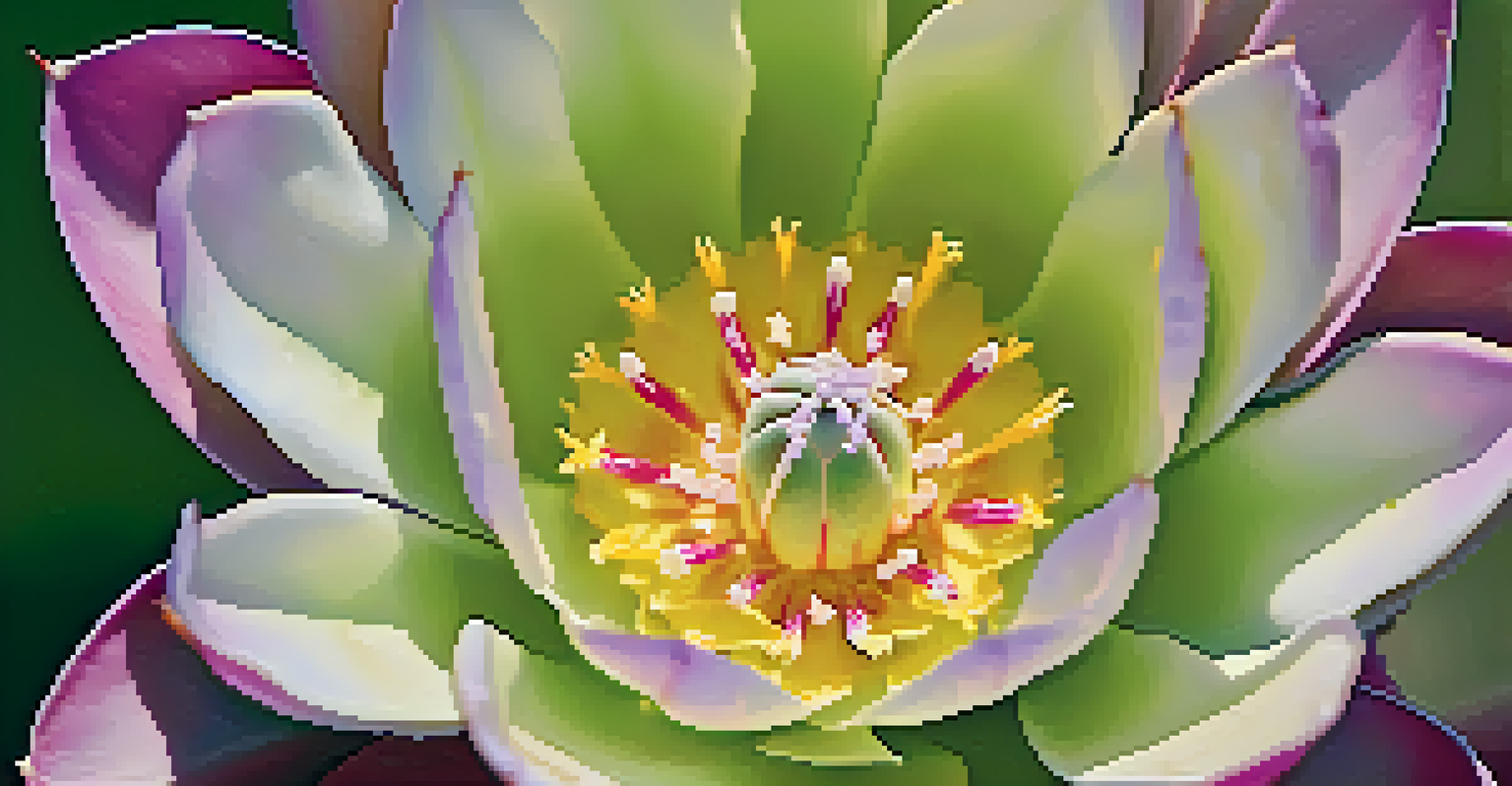Peyote as a Tool for Resistance Against Colonialism

Understanding Peyote and Its Cultural Significance
Peyote, a small cactus native to parts of Mexico and the southwestern United States, has deep cultural roots in Indigenous communities. For thousands of years, it has been used in spiritual and healing practices, making it more than just a plant; it's a symbol of identity and resilience. Understanding its significance requires acknowledging the complex relationship between Indigenous peoples and their land, culture, and traditions.
The use of peyote in ceremonies is often a way to connect with ancestors and the spiritual world, providing guidance and insight.
The use of peyote in ceremonies is often a way to connect with ancestors and the spiritual world, providing guidance and insight. This connection is particularly important in the face of historical traumas inflicted by colonial powers. In essence, peyote represents a living link to cultural heritage that many Indigenous peoples strive to preserve.
As we explore the role of peyote in the context of colonialism, it's crucial to recognize that its use is not merely about substance but about reclaiming autonomy and identity. For many communities, the act of consuming peyote is a powerful assertion of their cultural rights, serving as a bulwark against the erasure of their traditions.
Colonialism's Impact on Indigenous Spiritual Practices
Colonialism has historically sought to undermine Indigenous cultures, often labeling their practices as primitive or superstitious. This led to the suppression of spiritual rituals and the imposition of foreign belief systems. The attack on these practices wasn't just about religion; it was a strategic move to erase Indigenous identity and community cohesion.

The criminalization of peyote use in the early 20th century exemplifies this cultural assault. It forced many Indigenous practitioners underground, leading to a loss of communal practices and access to traditional knowledge. This suppression was not just an attack on a plant but an attack on a way of life, deeply intertwined with their identity.
Peyote's Cultural Significance
Peyote serves as a crucial symbol of identity and resilience for Indigenous communities, connecting them to their cultural heritage and spiritual practices.
In response to these oppressive measures, many Indigenous communities began to view peyote as a tool of resistance. By continuing to practice their traditions, they affirm their existence and resilience against colonial narratives that sought to define them out of history.
Peyote as a Form of Spiritual Resistance
Engaging with peyote is often framed as a spiritual act of defiance against colonial oppression. For many Indigenous peoples, participating in peyote ceremonies allows them to reclaim their narratives and assert their place in the world. These ceremonies serve as a collective reminder of their enduring spirit and cultural resilience.
Ultimately, peyote serves as a powerful reminder of the enduring spirit of Indigenous peoples.
In these sacred spaces, individuals connect not only with the plant but with their community and ancestors as well. This connection fosters a sense of belonging and purpose, counteracting the isolating effects of colonialism. It's a powerful way to nurture cultural knowledge and pass it down through generations.
Moreover, peyote ceremonies often address contemporary issues faced by Indigenous communities, such as land rights and social justice. By intertwining these discussions with spiritual practices, communities reinforce their resistance to ongoing colonial influences and assert their right to self-determination.
Legal Battles and the Fight for Peyote Rights
The fight for legal recognition of peyote use has been a significant aspect of Indigenous resistance. In the United States, the American Indian Religious Freedom Act (AIRFA) was established in 1978 to protect the rights of Indigenous peoples to practice their religions, including peyote ceremonies. However, the implementation of these rights has often faced challenges.
Legal battles continue as Indigenous communities advocate for their right to use peyote without fear of persecution. These efforts highlight the ongoing struggle against a legal system that has historically marginalized their practices. In recent years, more attention has been drawn to these issues, as activists work tirelessly to ensure that Indigenous voices are heard.
Resistance Against Colonialism
The use of peyote is framed as an act of defiance, allowing Indigenous peoples to reclaim their narratives and assert their cultural rights in the face of historical oppression.
The journey toward legal recognition is not just about access to peyote; it's about restoring dignity and respect for Indigenous cultures. Winning these legal battles is a vital step in the broader fight against colonialism, as it affirms the legitimacy of Indigenous beliefs and practices.
Peyote in Contemporary Indigenous Activism
Today, peyote plays a crucial role in contemporary Indigenous activism, symbolizing a reclamation of cultural identity. Activists often use peyote ceremonies as a way to gather strength and unity in their fight for rights and recognition. This connection to their heritage empowers them to advocate for social justice, environmental protection, and the preservation of sacred lands.
These gatherings serve not only as spiritual events but also as strategic organizing spaces. By coming together to engage with peyote, communities can share knowledge and resources, fostering a sense of solidarity. This collective action is crucial in addressing the multifaceted challenges that Indigenous peoples face today.
Moreover, the visibility of peyote in activism helps educate broader society about Indigenous rights and issues. It invites non-Indigenous individuals to learn about the significance of these practices, encouraging a dialogue about respect, recognition, and reconciliation.
The Role of Allies in Supporting Indigenous Practices
Allies play a vital role in supporting Indigenous communities in their fight for the right to practice peyote ceremonies. This support can take many forms, from advocating for policy changes to amplifying Indigenous voices in discussions about cultural rights. Allies must approach this work with humility, recognizing that their role is to support, not to lead.
Educating oneself about the significance of peyote and the historical context of its use is an essential step for allies. Understanding the cultural importance of peyote helps reinforce the need for respect and recognition of Indigenous practices. It also fosters a more informed dialogue about the impacts of colonialism on these communities.
Legal and Activism Challenges
Ongoing legal battles and contemporary activism highlight the struggle for Indigenous rights to practice peyote ceremonies and ensure the preservation of their cultural practices.
Moreover, allies can help create spaces for Indigenous voices to be heard, whether through social media platforms or community events. By elevating these narratives, allies contribute to a broader understanding of the complexities surrounding peyote use and Indigenous resistance, fostering a more inclusive society.
Future Perspectives: Peyote and Indigenous Resilience
As Indigenous communities continue to navigate the challenges of colonialism, peyote remains a symbol of resilience and hope. The future of peyote practices lies in the hands of the younger generations, who are increasingly engaging with their cultural traditions. This resurgence in interest bodes well for the preservation of these practices amidst modern challenges.
Moreover, the ongoing dialogue about peyote and its significance is crucial in fostering understanding between Indigenous and non-Indigenous peoples. As more people learn about the importance of peyote in resistance movements, it creates opportunities for allyship and support. This collaboration is vital for advancing the rights of Indigenous communities.

Ultimately, peyote serves as a powerful reminder of the enduring spirit of Indigenous peoples. It is a testament to their ability to adapt and thrive in a world that has often sought to diminish their existence, reinforcing the idea that cultural practices can be both a source of strength and a form of resistance.